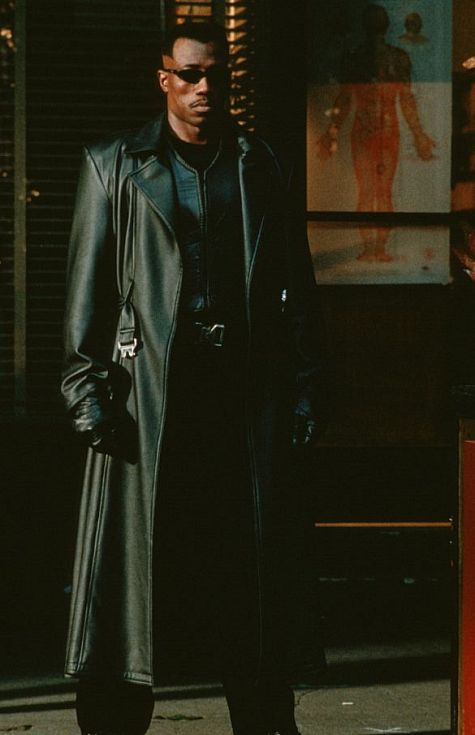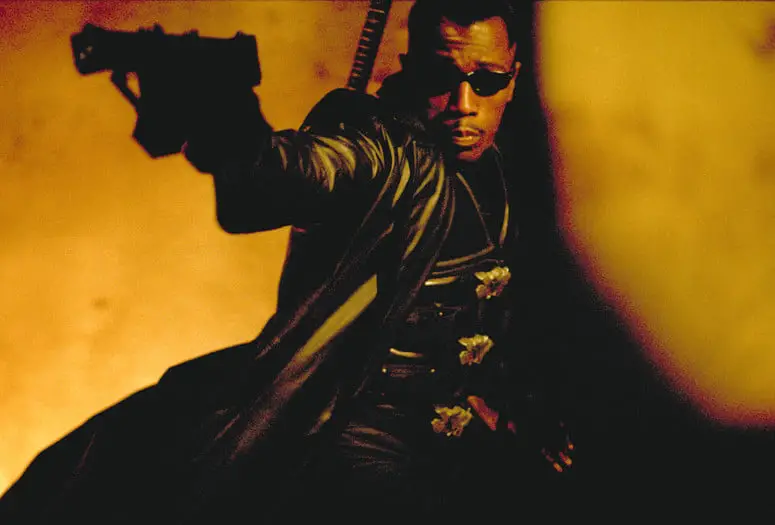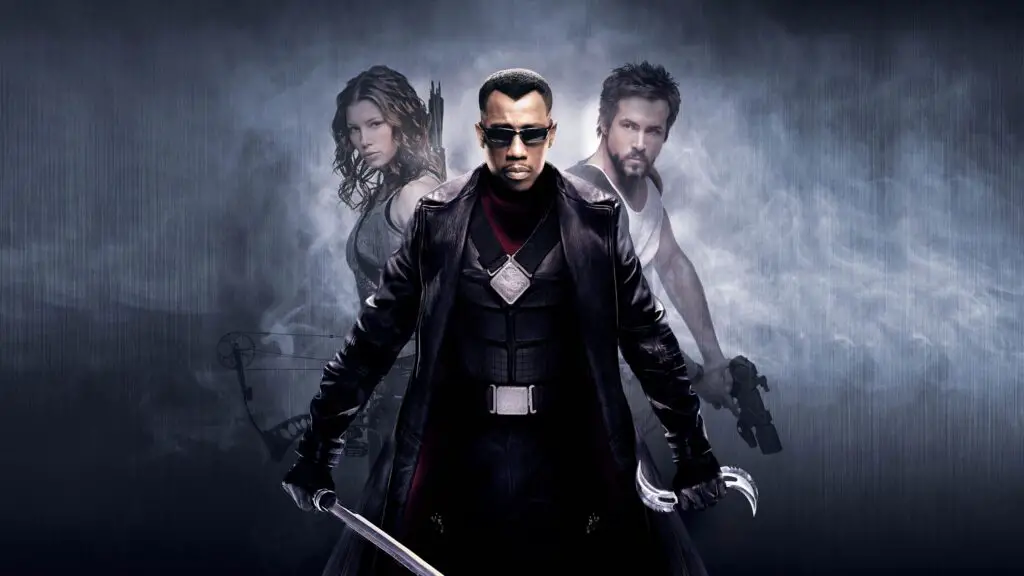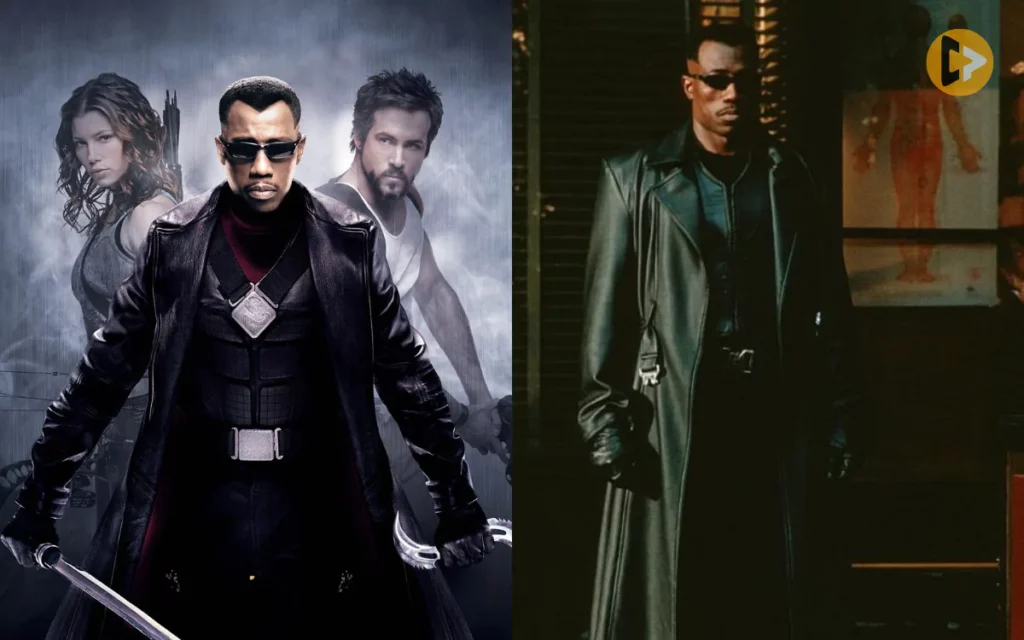What’s up, vampire hunters and nightcrawler enthusiasts? Dive into the shadowy world of Blade, the iconic vampire slayer who’s been slicing and dicing through the undead long before most of our current superhero favorites took their first caped steps. With a blend of martial arts, vampire lore, and a protagonist who’s as cool as the other side of the pillow, the Blade series is a cornerstone of superhero cinema. Let’s sink our teeth into the Blade movies, laid out for you in chronological order
Blade Movies In Release Date Order
- Blade (1998)
- Blade II (2002)
- Blade | Trinity (2004)
Blade (1998)
Yo, let’s take it back to where it all began, with Blade (1998). Wesley Snipes steps into the night as Blade, the fiercest vampire hunter to ever grace the screen, sporting a look that’s all shades of cool. This isn’t just any intro to a character; it’s a dive into a world where vampires lurk in the shadows of every club, waiting for their next victim. But they didn’t count on Blade, a half-vampire, half-human with a grudge against all things vampiric, thanks to his unique heritage.
Key Highlights
The Origin Story: Born from a mother bitten by a vampire, Blade’s got all their strengths and none of their weaknesses, except for that pesky thirst. But he’s got that under control.
Epic Action: Remember that rave scene with the blood shower? Iconic. Blade slicing through vampires with martial arts and a sword that’s too cool for school set the bar for every action sequence that followed.

Blade II (2002)
Fast forward to Blade II (2002), and things get even wilder. Guillermo del Toro takes the helm, introducing us to a new breed of terror – the Reapers. These baddies make your average vampire look like a cuddly bunny, pushing Blade into an uneasy alliance with his enemies. It’s a whole new ball game of creepy, crawly, and outright chilling.
Why It’s a Must-Watch
The Reapers: Imagine vampires on steroids, with an insatiable hunger for both humans and vampires. Yeah, scary stuff.
Unlikely Alliances: Blade teaming up with the Bloodpack? It’s like watching frenemies unite against a common foe, adding layers to Blade’s character.

Blade | Trinity (2004)
In Blade: Trinity (2004), the stakes are higher, the villains are badder, and the allies, well, they’re pretty kick-ass. Enter Dracula, or “Drake,” because apparently, even ancient vampires need rebranding. Blade’s not just fighting for survival; he’s fighting for the fate of humanity. With the help of the Nightstalkers, including Jessica Biel and Ryan Reynolds, Blade’s ready to take the fight to the next level.

The Future of Blade: A New Era Awaits
As whispers of Blade’s return to the MCU with Mahershala Ali in the lead role grow louder, we can’t help but speculate about the future. How will Blade fit into the MCU’s tapestry? Will he stand alone, or join forces with the Avengers? The possibilities are endless, and the excitement is real.
What Fans Are Saying
MCU Integration: Fans are buzzing about Blade’s potential to shake up the MCU with his unique brand of justice.
A Fresh Take: With Ali at the forefront, expectations are high for a Blade that honors the past while carving out its own legacy.
Behind the Blade | Crafting a Vampire Slayer
Creating Blade wasn’t just about slapping on some leather and handing Snipes a sword. It was about building a world where the supernatural is hidden in plain sight, blending horror, action, and a touch of the tragic hero. From Snipes’ martial arts prowess to the groundbreaking special effects, Blade set a standard for superhero movies that dared to be different.
Blade’s Cultural Impact | Cutting Through the Genre
Before the MCU became the juggernaut it is today, Blade was proving that superhero movies could be dark, gritty, and still wildly entertaining. It broke the mold, showing that superhero films could appeal to adults and tackle themes of identity, belonging, and the fight against darkness within and without.
Conclusion
The Blade series, starting with the groundbreaking film in 1998, has left an indelible mark on the superhero genre, blending horror, action, and a compelling anti-hero in a way that had never been done before. As we anticipate Blade’s return to the big screen within the MCU, the legacy of Wesley Snipes’ portrayal and the character’s rich lore continue to excite and inspire. The Daywalker’s journey is far from over, and the future holds endless possibilities for this iconic vampire slayer.
What makes Blade unique among vampire lore?
Blade, the Daywalker, combines the strengths of vampires with the crucial advantage of being immune to sunlight, setting him apart in vampire lore as a formidable hunter with few weaknesses.
Did Wesley Snipes perform his own stunts in Blade?
Yes, Wesley Snipes, a trained martial artist, performed many of his own stunts in the Blade series, contributing to the authenticity and intensity of the action scenes.
How did the Blade movies impact Marvel’s approach to filmmaking?
The success of the Blade movies demonstrated the potential for Marvel characters on the big screen and helped pave the way for the darker, more mature themes seen in later Marvel films.
Will the new Blade be part of the MCU?
Yes, the upcoming Blade movie starring Mahershala Ali is set to be part of the Marvel Cinematic Universe (MCU), introducing the character to a new generation of fans.
How does Blade’s weaponry contribute to his character?
Blade’s arsenal, including his signature sword and various specially designed weapons, underscores his uniqueness as a vampire hunter and his technical ingenuity in combating vampires.


